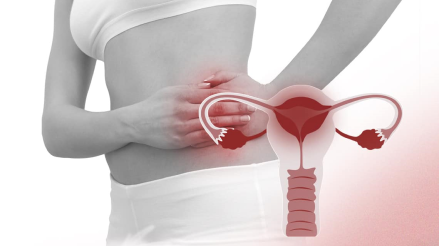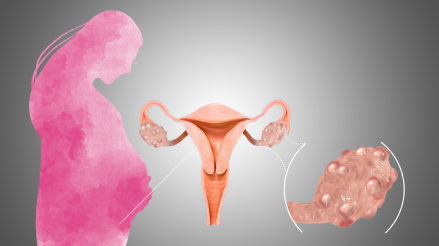You may also like…
Leiomyomas/ Fibroids
Fibroids are non-cancerous growths that often develop in women before they reach menopause. They are the most common type of non-cancerous tumor found in the uterus of premenopausal women. These growths come from the muscular layer of the uterus called the myometrium.
Who is more at risk for getting fibroids?
Around 70% white women and 80% African women are at risk of getting fibroids, even though the clinical symptoms are twice more visible in African women than in white. However, factors such as early menarche (first time a girl gets her period), use of contraception before the age of 16 and an increased BMI.
What are the common symptoms women with Fibroids have?
These include abdominal pressure, pain and abnormal vaginal bleeding.
Where can fibroids grow?
- Submucosal (15%) – they may grow inside the uterine/womb
- Intramural (75%) – fibroids grow within the “wall” of the uterus/womb
- Subserosal (10%)– fibroids grow on the outside of the uterus/womb
What might your doctor do?
A complete physical and clinical examination comes first. On physical examination the most common finding is often an enlarged uterus that may seem irregular. A clinical diagnosis may later be confirmed with ultrasonography.
Medical management is the most common initial step for symptomatic fibroids and includes hormonal therapy, NSAIDs or control of the brain-hormone axis supporting reproductive cycle hormones. However, this comes with limited use allowance and once the treatment is stopped, symptoms recur and fibroid continues to grow.
Intrauterine devices that release hormone also provide relief but not for a long-term solution and do not affect overall size of fibroid.
Surgical treatment remains the most successful treatment for leiomyomas/fibroids.
What are the complications of fibroids?
Complications may include chronic pelvic pain, heavy menstrual bleeding (may lead to anemia), poor pregnancy outcomes, and infertility.
Menstrual Disturbances
- Heavy or prolonged menstrual bleeding.
- Frequent menstrual periods that occur less than 21 days apart.
- Bleeding or spotting that occurs between regular menstrual periods.
- Non-stop or prolonged bleeding throughout the menstrual cycle.
- Any vaginal bleeding that occurs after menopause (when a woman has stopped having periods for 12 consecutive months).
- Infertility: Difficulty in getting pregnant or experiencing recurrent pregnancy loss.
Pain
- Severe menstrual cramps that cause sharp or throbbing pain in the lower abdomen.
- Pain in the lower back during or before menstruation.
- Pain or discomfort in the abdomen, typically associated with menstruation.
- Feeling a lump or mass in the abdominal area or at the opening of the vagina.
Pressure Symptoms on Adjacent Viscera:
- Bladder: Symptoms such as increased urgency to urinate, frequent urination, or difficulty emptying the bladder.
- Ureters: Symptoms like pain or discomfort while urinating or blood in the urine.
- Rectum: Symptoms such as constipation, pain during bowel movements, or a feeling of fullness or pressure in the rectal area.
- Pregnancy Losses, Postpartum Hemorrhage, Uterine Inversion



